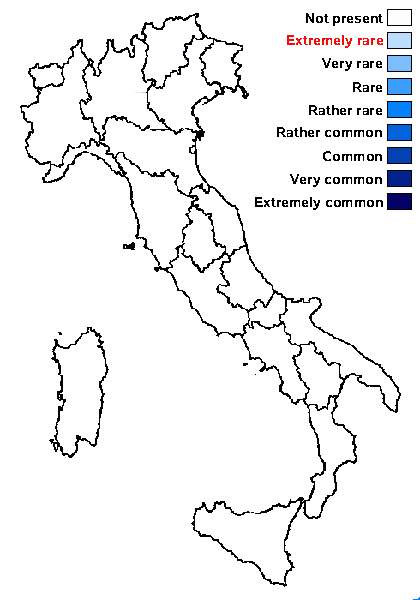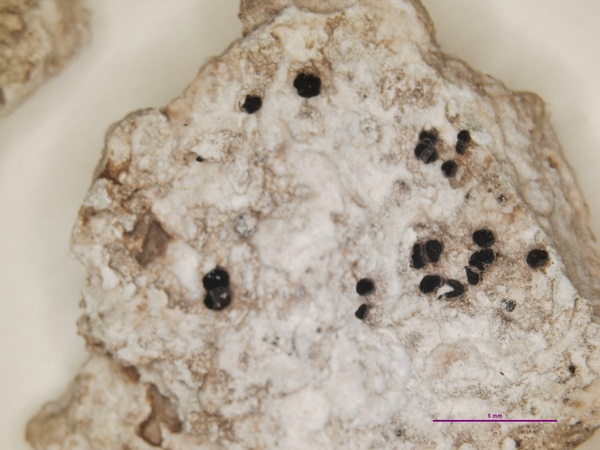Buellia almeriensis Llimona
in Vězda, Schedae ad Lich. Sel. Exs., Fasc. 88., 48: 7 no. 1199, 1973
Synonyms: Buellia heliophila Llimona
Distribution:
Description: Thallus crustose, endosubstratic or thinly episubstratic and then rimose, whitish. Medulla white, not amyloid, I-. Apothecia lecideine, black, 0.3-0.7 mm across, sessile and constricted at base, with a flat to slightly convex disc, and a thin, raised, usually persistent proper margin. Proper exciple up to 60 µm wide laterally, Leptocline-type, homogeneously dark brown, with an additional orange pigment reacting K+ reddish (solution), the inner part of long-celled, interwoven hyphae, the outer part of long-celled, parallel, strongly agglutinated and thick-walled hyphae; epithecium brown, N-; hymenium colourless or pale yellow in upper and lower parts, not inspersed with oil droplets, 90-100 µm high; paraphyses simple to sparingly branched, the apical cells swollen, with a dark cap; hypothecium dark brown. Asci 8-spored, clavate to cylindrical-clavate, the apical dome K/I+ dark blue with a pale, conical-pointed apical cushion (axial mass), the wall I-, but the thin outer gel I+ blue, Bacidia-type. Ascospores 1-septate, not constricted at septum, brown, narrowly oblong, with obtuse ends, 13-18 x 5.5-6.5 µm, Buellia-type, thin-walled throughout, with a smooth wall. Pycnidia black, semi-immersed in the thallus. Conidia bacilliform, c. 5 µm long. Photobiont chlorococcoid. Spot tests: K+ yellow turning red, C-, KC-, P+ yellow-orange, UV-. Chemistry: atranorin, norstictic and connorstictic acid. Note: a gypsicolous species known from the SE part of the Iberian Peninsula; to be looked for in the gypsum outcrops of Sicily.
Growth form: Crustose
Substrata: rocks
Photobiont: green algae other than Trentepohlia
Reproductive strategy: mainly sexual

Predictive model
Growth form: Crustose
Substrata: rocks
Photobiont: green algae other than Trentepohlia
Reproductive strategy: mainly sexual

Predictive model
 INDEX FUNGORUM
INDEX FUNGORUM
 GBIF
GBIF


